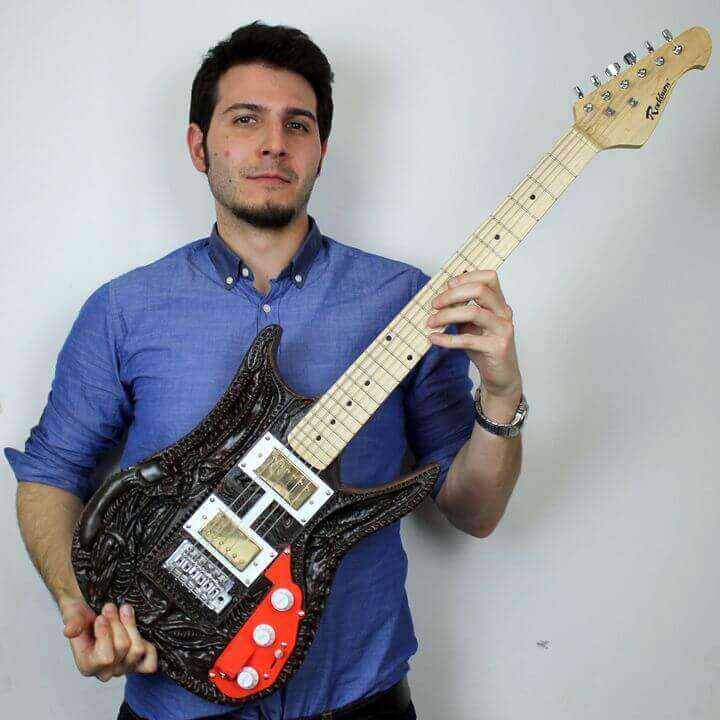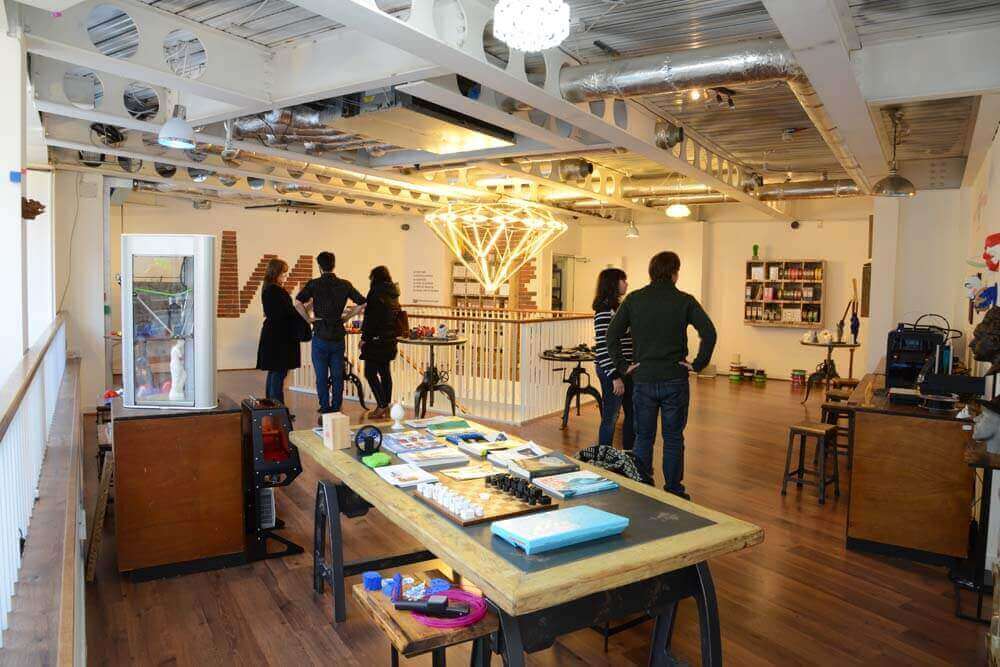This 3D printed guitar based on the work of H.R. Giger showcases not just the music, but the great potential of digital fabrication.

At the iMakr store in Clerkenwell, a stone’s throw from London’s Silicon Roundabout and the design stores of Old Street, Francesco Orrù is demonstrating his 3D printed guitar. An Italian designer inspired by video games and movies, Orrù has combined a traditional electric guitar neck with a Fender Stratocaster-shaped body created on a Delta WASP machine and printed with organic alien shapes in the style of HR Giger.
In terms of sound it may not be up there with an actual Stratocaster. But it does a pretty good job as a playable guitar – and it offers a glimpse into the future of home manufacturing, where 3D printers promise to put product design into the hands of the masses, and slash production costs.
Orrù prepared a four-part template for a guitar body in Autodesk Inventor, then imported it into 3D sculpting program ZBrush, where he added the Alien-inspired details. The largest parts – the two main halves of the body – were printed on a Delta WASP machine, which has a double-height platform. The volume cover, where you can set your tone or volume, was printed on a Zortrax, and the pickup cover on a Replicator 2. The printing process was lengthy, but Orrù reckons it has a big advantage in terms of cost saving.
“It’s much cheaper,” he said. The plastic filament cost about £30, and then it is whatever was spent on the non-printed elements: £70 or £80 for the pickups, volume and tone ports, bridge, neck and machine-heads. As a comparison, a conventional entry-level electric guitar can be had for about £80 to £150. Orrù said he is sure we will soon be seeing 3D printed guitars on sale widely.
Until then, folks with access to a 3D printer can follow the detailed instructions Orrù has provided on MyMiniFactory.
3D printed guitars are just the beginning

Guitar designers will be riding a small part of a much wider wave. Mustafa Raee, the 30-year-old manager of the iMakr store, is seeing a far more diverse range of customers looking to buy printers, and be trained, than he did a couple of years ago. It began with architects, mechanical engineers, toymakers making prototypes, and hobbyists, he said, but this clientele is expanding to include ad agencies looking for cool promotional goodies, fashion designers experimenting with flexible materials, and people in industries like food retail who want to try out a new technology and see where it takes them.
“Speaking in architectural terms, I liken it to a time when we were building with bricks, and then suddenly we had reinforced concrete and you could create weird cantilevered shapes and all sorts of self-supporting structures,” Raee said. “We’ve got a new tool set; we can make objects that you cannot manufacture in any other way.”
The technology frees people’s creativity, he believes, allowing them to realize an idea without the punitive costs. One of his stranger print requests was from a woman whose husband had passed away: She brought in a mould of his hand, which was scanned, printed and turned into a locket for her daughter. More prosaically, Raee says, people will be able to cut out the middleman when shopping. Rather than buying a piece of furniture from IKEA and assembling it at home, they will be able to simply download it, print it themselves and assemble it.
A revolution of this kind has some pretty scary implications for factory workers and retailers. If printing is adopted wholesale, any number of people could find themselves out of work. Raee says this is a part of progress. People also lost their jobs to robots when automation was introduced in car manufacturing, he says, adding that 3D printing will open up new job opportunities too.
Daniel Ajagbe could be one of the beneficiaries. A 26-year-old Londoner, Ajagbe is a designer with a background in engineering who, together with some friends, aims to start a company producing and selling toys. He envisions printing prototype casts, and then using them to produce cartoon-inspired toys in materials such as the soft vinyl that rubber ducks are made of. He is at the iMakr store event to find out more about the technology and says he hopes to buy a printer in the next few weeks.
For Ajagbe and those like him, it could work out nicely. Soundcloud and YouTube have given musicians and filmmakers a great way to access a mass audience. Perhaps now the designers are getting their turn.
Image sources: MyMiniFactory, iMakr
Image sources: MyMiniFactory, iMakr
License: The text of "3D Printed Guitar Inspired by H.R. Giger" by All3DP is licensed under a Creative Commons Attribution 4.0 International License.